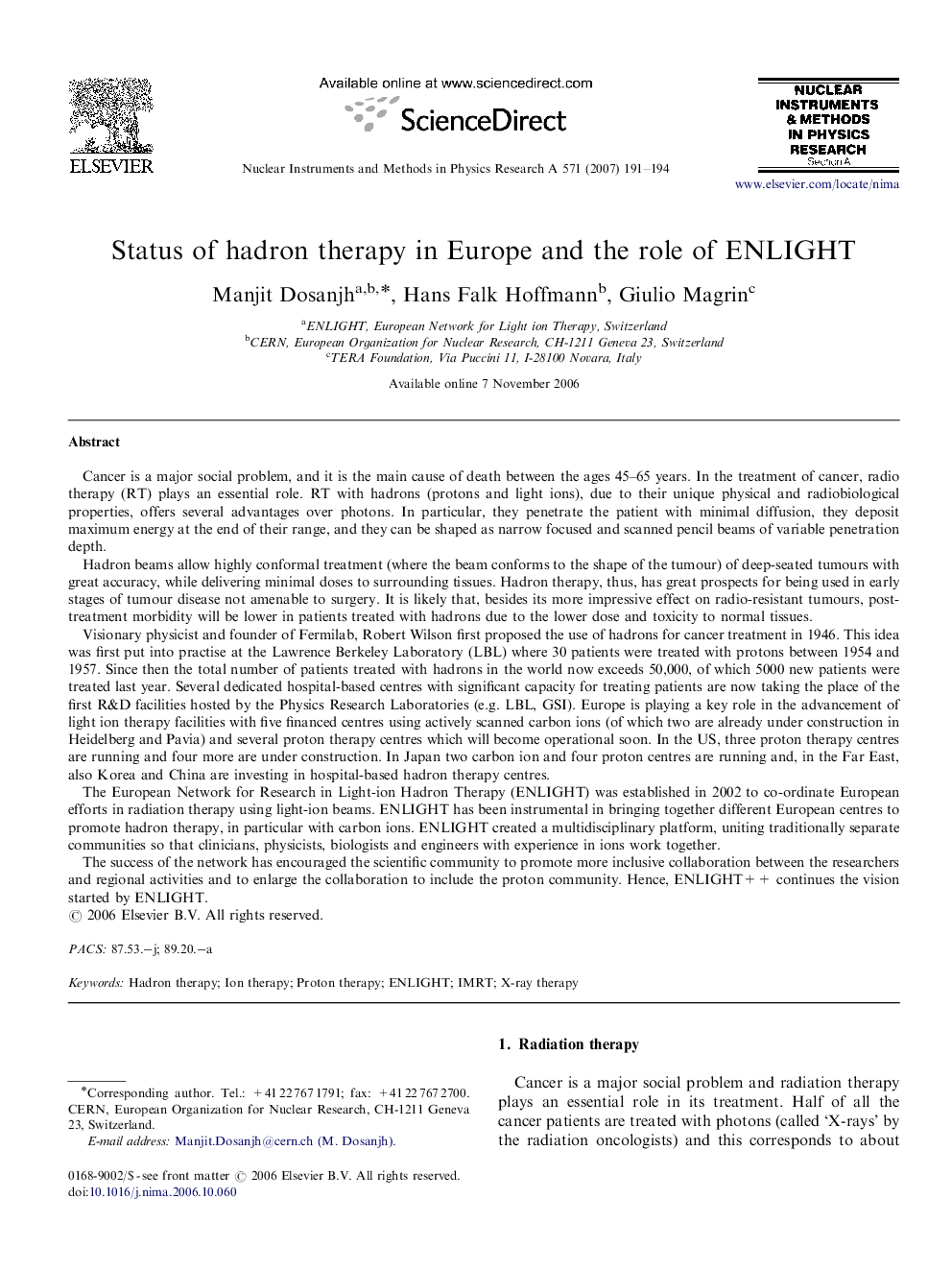| کد مقاله | کد نشریه | سال انتشار | مقاله انگلیسی | نسخه تمام متن |
|---|---|---|---|---|
| 1831293 | 1526499 | 2007 | 4 صفحه PDF | دانلود رایگان |

Cancer is a major social problem, and it is the main cause of death between the ages 45–65 years. In the treatment of cancer, radio therapy (RT) plays an essential role. RT with hadrons (protons and light ions), due to their unique physical and radiobiological properties, offers several advantages over photons. In particular, they penetrate the patient with minimal diffusion, they deposit maximum energy at the end of their range, and they can be shaped as narrow focused and scanned pencil beams of variable penetration depth.Hadron beams allow highly conformal treatment (where the beam conforms to the shape of the tumour) of deep-seated tumours with great accuracy, while delivering minimal doses to surrounding tissues. Hadron therapy, thus, has great prospects for being used in early stages of tumour disease not amenable to surgery. It is likely that, besides its more impressive effect on radio-resistant tumours, post-treatment morbidity will be lower in patients treated with hadrons due to the lower dose and toxicity to normal tissues.Visionary physicist and founder of Fermilab, Robert Wilson first proposed the use of hadrons for cancer treatment in 1946. This idea was first put into practise at the Lawrence Berkeley Laboratory (LBL) where 30 patients were treated with protons between 1954 and 1957. Since then the total number of patients treated with hadrons in the world now exceeds 50,000, of which 5000 new patients were treated last year. Several dedicated hospital-based centres with significant capacity for treating patients are now taking the place of the first R&D facilities hosted by the Physics Research Laboratories (e.g. LBL, GSI). Europe is playing a key role in the advancement of light ion therapy facilities with five financed centres using actively scanned carbon ions (of which two are already under construction in Heidelberg and Pavia) and several proton therapy centres which will become operational soon. In the US, three proton therapy centres are running and four more are under construction. In Japan two carbon ion and four proton centres are running and, in the Far East, also Korea and China are investing in hospital-based hadron therapy centres.The European Network for Research in Light-ion Hadron Therapy (ENLIGHT) was established in 2002 to co-ordinate European efforts in radiation therapy using light-ion beams. ENLIGHT has been instrumental in bringing together different European centres to promote hadron therapy, in particular with carbon ions. ENLIGHT created a multidisciplinary platform, uniting traditionally separate communities so that clinicians, physicists, biologists and engineers with experience in ions work together.The success of the network has encouraged the scientific community to promote more inclusive collaboration between the researchers and regional activities and to enlarge the collaboration to include the proton community. Hence, ENLIGHT++ continues the vision started by ENLIGHT.
Journal: Nuclear Instruments and Methods in Physics Research Section A: Accelerators, Spectrometers, Detectors and Associated Equipment - Volume 571, Issues 1–2, 1 February 2007, Pages 191–194